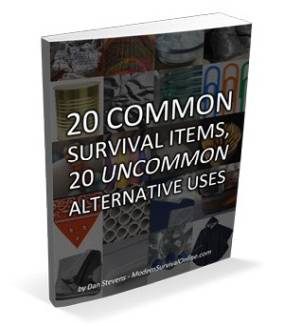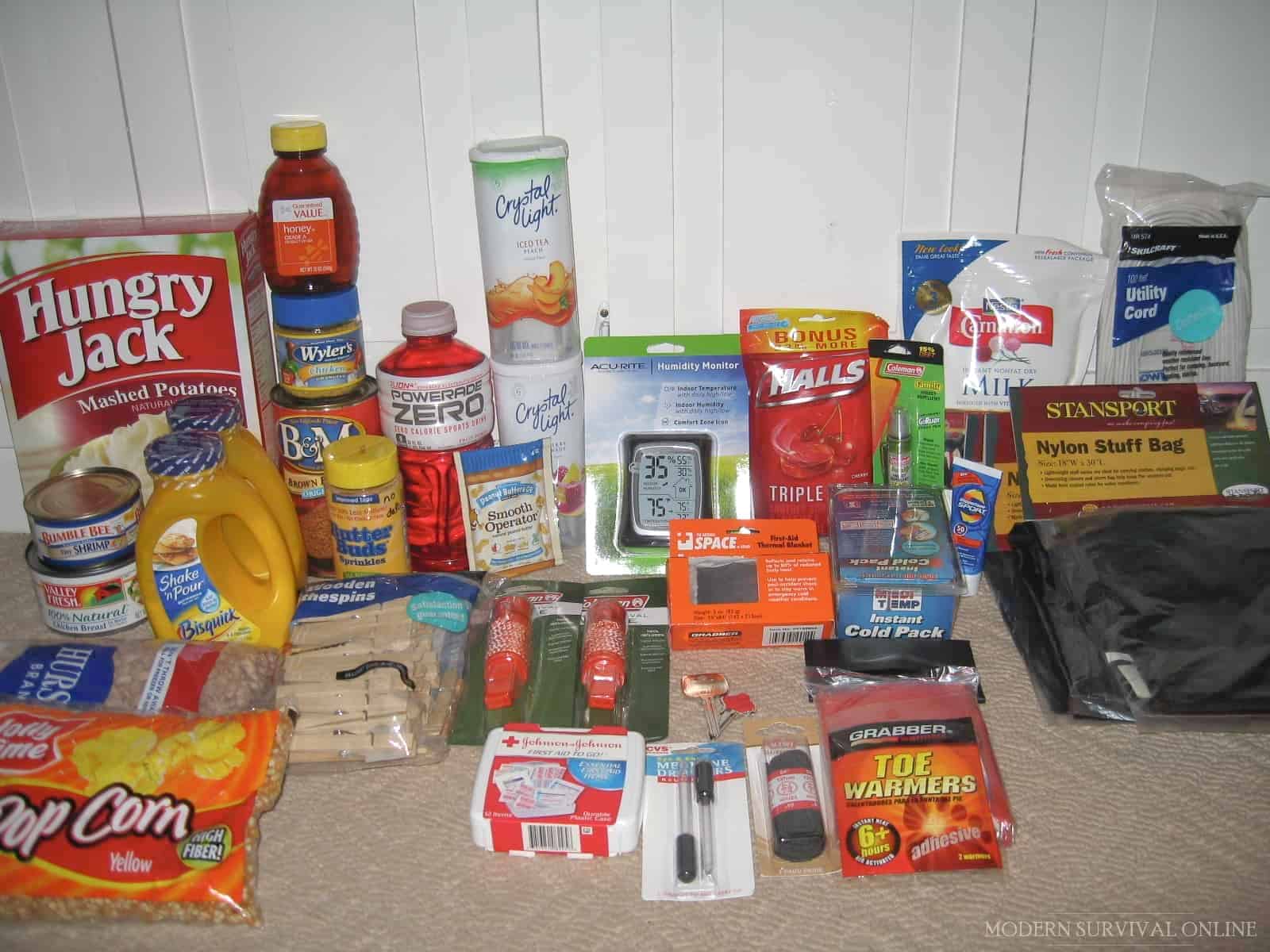When a catastrophe does occur, there is usually a run-on food supplies and survival equipment. People run to the stores and stock up on food, water, firewood, generators, and sometimes just about anything they can get their hands on.
Being prepared really matters. Having a good stockpile really matters. Saving money really matters.
If you’re a new prepper and just beginning to build your stockpile of food and supplies, money could be an obstacle. You don’t need to run out and buy a year’s worth of groceries in one shot. Who can afford to do that anyway?
Instead, you should look into things like couponing, discounts, and building your stockpile gradually over time.
Coupons can help you save a lot of money on preps. Your couponing habits can ensure that you have enough in your stockpile to last longer than if you ran out and purchased everything all at once. Your wallet will thank you, too. All of these do take a little effort on your part, however, in the long run, it will be worth it.
In this article, we will give you information on the basics of couponing and how to get preps for almost free, what you will want in your stockpile and great websites that will show you where the coupons and the best deals are.
Basics of Couponing
Coupons should be an important part of your financial portfolio. Using coupons is a serious way to save money and build a great stockpile. And when you can get your supplies at rock-bottom prices, it’s a win-win situation.
The trick to getting your prep items for free or almost free is to match coupons with the sale prices. And if you can, match up a sale, a store coupon, and the manufacturer’s coupon for extra savings.
To get the manufacturer’s coupon, go directly to their website. For instance, if you are searching for a particular item that you saw on sale such as Skippy Peanut Butter you would google and go to their website and click on “Get Coupon.”
Yes, it sounds like it could be challenging and time-consuming, but once you get a system down, it’ll be second nature. The top items you can get free or almost free are usually toothbrushes, toothpaste, shampoo, peanut butter, soup, cereals, and toilet paper just to name a few.
Though you can’t use two manufacturer’s coupons for the same item, you can use a store coupon and a manufacturer’s coupon together on the same item. It’s even better if your store will double your coupons.
For example, when purchasing toilet paper, you can print or download a coupon for Charmin toilet paper for $1.50 off any ONE Charmin® Ultra Soft or Strong 6 Mega Roll, 12 Double Roll or larger (excludes Essentials and Cottonelle pack of toilet paper (excluding 4 pack ). It was priced at Walmart on sale for $3.98 for a 6 pack. After using the coupon, it became $2.48 before tax. You can get more than one pack, but you will also need more than one coupon.
However, the best deals are at your local grocery stores that have their own in-store specials, like buy one get one free or double coupons. Use your coupons with the in-store specials to get the best deals and you can get some of your preps almost free. Check to see if they have a store loyalty card.
For example, a store has Del Monte diced tomatoes on sale as buy one get one free. The tomatoes are normally about a dollar a can, therefore, you get two cans for a dollar. Now add in a coupon for .50 cents off. You just got two cans of diced tomatoes for .25 cents each. It’s even better if your store doubles coupons.
The best place to find coupons will be in the Sunday paper. There are three inserts that come out on a regular basis: Red Plum, Smart Source and Proctor and Gamble. Other great options are store coupons, company websites, magazines, and printable coupons from coupons.com and couponmom.com.
Don’t overlook the blinking coupon machines on the aisles in the grocery store and downloadable coupons.
Now that you know the basics of couponing, it’s time to move on to what you’ll need in that stockpile. You should not have any problem finding coupons or sales, if not both for the following list.
What you need in your stockpile
When disaster strikes, or even with news of a catastrophe on the horizon, there’s a good chance your local grocery stores and hardware stores will become stripped bare within hours.
Panicked people will attempt to stock up on last minute supplies causing the grocery store or hardware store to turn into a battle ground.
To be ready to face an emergency when food and supplies are unobtainable, you need to invest in a long-term supply of food and survival equipment.
With the guidelines from the U.S. Department of Homeland Security and by doing quite a bit of research, here is a list of foods you should stockpile (using coupons, of course) to get you through a crisis and save money.
- Bottled water -1 gallon per person per day plus extra for washing or adding to food.
- Beef jerky or turkey jerky – Dried meat is excellent for long-term storage. You can even rehydrate the jerky in soups. It will absorb the water and add flavor.
- Canned meat – Buy tuna, salmon, chicken, turkey and spam. Meat is the most difficult to obtain so stock up. They have a long shelf life and provide necessary protein.
- Powdered milk – An excellent source of vitamin D and calcium when fresh milk is not available. Good for baking.
- Soups – Soups and Chili can be eaten right out of the can. They have a variety of nutrients, but you will want to get low-sodium soup so as not to increase your need for water.
- Bullion – Good for making soup and dry bullion powder and cubes store well while taking up minimal space.
- Beans – Dried beans of all types are loaded with protein, fiber, and nutrients. They store extremely well for long periods of time and are easy to cook.
- Canned vegetables, such as green beans, carrots, and peas – can be stored and kept for a long time. They provide essential vitamins, and you can use the liquid for soup stock.
- Canned fruit – Provides essential vitamins and can be stored for long periods of time. Don’t throw away the packing juice as it is loaded with nutrients as well.
- Dried fruits – Fruit such as apricots, raisins, banana chips, and cranberries, if properly dried, can be stored for years. They provide nutrients such as potassium and fiber.
- Peanut butter – An awesome comfort food for most and loaded with healthy fats and proteins. A very nutritious food.
- Whole-wheat crackers – A good replacement for bread.
- Nuts and trail mixes – Another great source of protein and it stores exceptionally well.
- Pasta – Is a high carbohydrate food and stores extremely well not to mention filling. There are a lot of things you can do with pasta.
- Cereal – Get a healthy, multi-grained cereal. If packaged correctly, it will store for a long period of time.
- Power bars and granola bars – Another excellent source of carbohydrates that will store well for up to six months.
- Rice – Rice is a great source of carbohydrates and will store well. Buy the whole grain rice instead of quick rice as quick rice has a limited shelf life. Like pasta, there are a lot of things you can do with rice.
- Food for infants – Formula (canned or powdered), baby cereal, jarred foods.
Foods you might want to consider:
- Coffee – Needed if you drink coffee on a regular basis and don’t function well without it.
- Protein powders – Easy to store. A good substitute for some meals.
- Spaghetti Sauce (canned or in a jar) – A meal when served with pasta. You can add in other items.
- Summer sausage cured meats that are vacuum packed – Will last a long time. Eat plain or add to soups.
- Honey – Will store indefinitely and is a natural sweetener that is good for you.
- Sugar
- Salt – Essential for survival.
- Spices – To help hide the flavor of some foods.
Don’t forget about basic medications and supplies for your first aid kit. Also coupon friendly. (Check your local drugstores for coupons and sales.)
- Prescriptions. First and foremost, make sure you have a supply of any prescribed medicines needed by you or your family members. Keep an extra supply of your medication on hand at all times, just in case.
- Bandages and dressings for wounds: Gauze pads-Band-Aid strips for small cuts and scrapes, large bandages, Gauze rolls and First-aid tape – for the larger, serious wounds with profuse bleeding.
- Topical antibiotics (can go a long way in fighting infection): Neosporin or generic triple antibiotic, First-aid cream, Iodine.
- Pain relief: Aspirin, Ibuprofen, Acetaminophen, Bactine spray and Corizone-10 or generic (can provide relief for minor burns and scrapes or conditions that cause itching)
- Burns: Burn cream, Petroleum jelly, Non-stick antiseptic gauze.
- Orthopedic Relief: Knee and ankle braces, Elastic wraps, Wrist brace, Finger splints, Arm sling.
- Eye care: Saline solution, Eye drops, Eye salve, Eye pads, Eye patches.
- Respiratory Relief: Inhaler, Cough suppressant, Cough expectorant, Mucus relief tablets, Nasal spray, Throat spray, Benadryl or generic antihistamines (Sinus congestion and other signs of a cold or virus can become an issue if not treated).
- Gastrointestinal: Tums or Rolaids, Emetrol, Pepto-Bismol, Kaopectate, Zantac.
- Dental: Floss, Cotton, Oral aesthetic such as Orajel or Anbesol, Temporary cavity filling mixture, Dental wax, Dental pick.
- Vitamins: You have no idea how long the crisis will last.
Items also recommended by the US Department of Homeland Security:
(Check your local home supply store and drug store for sales and coupons)
- Batteries
- Battery-powered or hand-crank radio and a NOAA Weather Radio with a tone-alert
- Flashlights and lanterns
- First aid kits
- Whistle or blow horn to signal for help
- Wrench or pliers to turn off utilities (You probably already have these)
- Dust masks to help filter contaminated air and plastic sheeting and duct tape to shelter-in-place
- Moist towelettes or baby wipes, garbage bags
- Paper goods – toilet paper, paper towels, plates, etc.
- Diapers (for baby and good for using on wounds that are bleeding profusely)
- For disinfecting items and the living area: Iodine, Hydrogen peroxide, Bleach, White vinegar (a powerful germ-killer and disinfectant, and in an emergency, it can be used to treat skin or open wounds)
- Manual can opener
- Candles (watch for coupons and sales on air fresheners as they usually include candles)
Good Websites
Doing a quick search on the internet will result in locating coupons, and as everything is going digital these days, the coupon process of finding and using coupons has never been more streamlined.
A shopper can save by just handing a cashier their phone or customer cards and have any applicable coupons automatically deducted from their grocery bill. No browsing coupon inserts for hours and no clipping involved.
Some excellent websites are:
Couponmom. This website will show you where the item is on sale, what percentage has been discounted and if there is a coupon for the item. Click on Grocery Deals by State to find the sales at the stores in your area.
Coupon.com has printable coupons and online coupons. There are hundreds of deals on basically anything you want to buy including groceries and other prepping supplies.
RedPlum has an online version of what you find in the Sunday paper. It offers some deals and has a service called Clip free which allows you to load coupons to your store loyalty cards.
Savings.com has lots of coupon codes for both brand name and store coupons including Home Depot and Amazon.
If you have a smart phone, you need to install apps such as:
lbotta.com A great app where you earn cash back on in-store and mobile purchases with a receipt or purchase verification. You might have to watch a 1-minute video or complete a survey in some cases, but it will be worth it.
Simply upload a photo/scan barcode and your account will be credited. Once you meet the threshold you can get a PayPal deposit.
Saving Star is a good way to save money on your grocery and store purchases. They were the first fully-digital grocery eCoupon rewards service. You simply select the eCoupons you want and link them to your store loyalty cards.
Target cartwheel is also great for food and other supplies you may want in your stockpile.
Checkout51 is a lot like Ibotta but has a different set of coupons that they upload every Thursday.
RetailMeNot maintains a collection of coupon websites. It is great to use in your favorite stores such as Home Depot.
Shopkick created an app for smartphones and tablets that offer customers rewards for walking into stores. It gives you exclusive deals at great stores such as Best Buy, and Target. You can earn points just by walking into the store and get more points for purchases.
Ebates is great for the online shopper looking for a deal. You can find a coupon code for just about anything, get cashback for each store code used and then you can redeem the points. Refer a friend and you can get even more cash added to your account.
Another money-saving option to look into is a barcode scanner app. It comes in handy for purchases that you are looking at. You simply scan the barcode on the item in the store and it will tell you if it is cheaper somewhere else.
Search eBay using the word “coupons” and you will find quite a few listings of coupons that can be purchased. Make sure the coupons haven’t expired and check the history of feedback on the seller before you make any purchases.
Building a significant stockpile is key for a serious prepper. However, it can be financially demanding if you don’t do your homework.
There’s no rule that says you must have a great stockpile overnight. If you’re on a budget and can’t afford to spend a lot on food items and equipment, don’t hesitate to take small steps and gradually build your stockpile.
The best way to get the most bang for your buck is to watch the weekly sales and monitor the coupons. Check the websites for manufacturer’s coupons and additional printable coupons. Upload the barcode scanner for comparison shopping.
Try the above noted and with a little know-how, time and effort, you can have a stockpile suitable for almost any crisis. By using couponing and doing a little research, you can get the basic necessities for your stockpile for almost free.


Like what you read?
Then you’re gonna love my free PDF, 20 common survival items, 20 uncommon survival uses for each. That’s 400 total uses for these dirt-cheap little items!
We will not spam you.

















